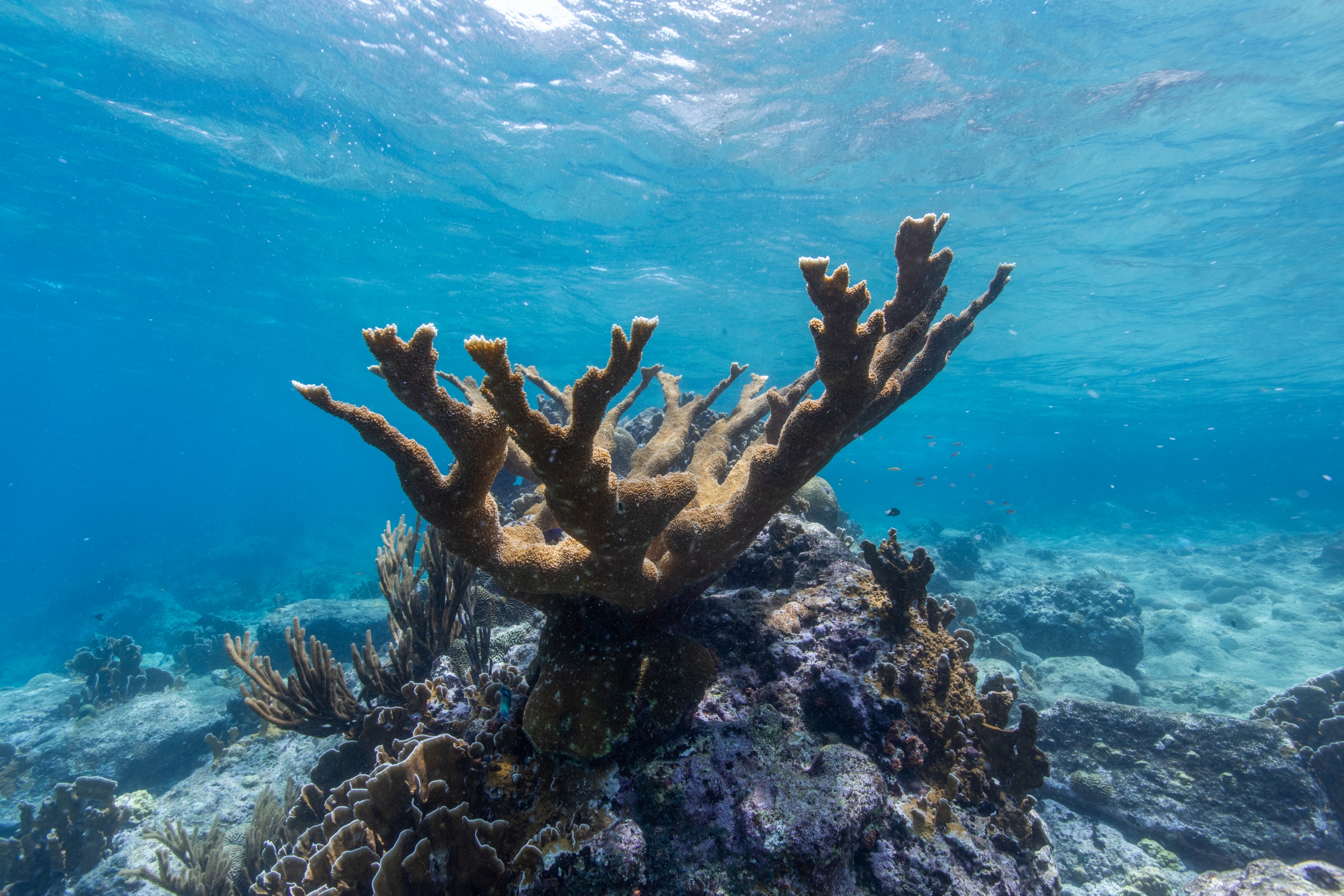Warming waters lead to overtaxed corals and increased bleaching events

Healthy coral reefs are vital to healthy ocean ecosystems. Image: Roshan Patel, Smithsonian’s National Zoo and Conservation Biology Institute
The globe is seeing unprecedented heat this summer, with temperatures the highest ever recorded. For us on land, this means heat advisories, increases in heat-related health issues, and cranked-up air conditioners—but what does this mean for life in the ocean?
Coral ecosystems may not be top-of-mind for us, but they play a hugely important role in maintaining a diverse ocean with plentiful fish. They teem with life, with perhaps one-quarter of all ocean species depending on reefs for food and shelter.
What Is Coral Bleaching?
All corals have polyps, and individual polyps have an open end with a mouth surrounded by a ring of tentacles. The tentacles have stinging cells, that help them to capture small organisms for food, and inside the body of the polyp are digestive and reproductive tissues.
Shallow water corals that live in warm water often have another source of food, the zooxanthellae (pronounced zo-o-zan-THELL-ee). These single-celled algae photosynthesize and pass some of the food they make from the sun’s energy to their hosts, and in exchange the coral animal gives nutrients to the algae. It is this relationship that allows shallow water corals to grow fast enough to build the enormous calcium carbonate structures we call reefs. The zooxanthellae also provide much of the green, brown, and reddish colors that corals have.
When corals are exposed to high temperatures (or other environmental changes), they expel the zooxanthellae that produce the food corals need. Without their zooxanthellae, the living tissues are nearly transparent, and you can see right through to the white stony skeleton. The effect is known as coral bleaching, and Smithsonian researchers are witnessing it firsthand. Without their algae, corals can survive for short periods of time, but are more susceptible to disease and warm temperature events. In a best-case scenario, healthy tissue remains deep in the coral skeleton allowing them to grow and recover in fair conditions.
In Florida, at the Smithsonian Marine Station at Ft. Pierce, and at Carrie Bow Cay, a Smithsonian-run field station off the coast of Belize, scientists track bleaching events, in addition to many other indicators of coral health over time. In early August, researchers at the Smithsonian Marine Station reported that coral species at various sites in the Florida Keys were bleached months earlier than normal, and at one location, called Coral Gardens, all the corals were bleached.

Additional Threats to Corals
Another impact of warming water on corals is an increase in disease. Ft. Pierce scientists are attempting to slow the spread and stop disease progression with a combination of probiotics and antibiotics. The Smithsonian 3D Digitization Program Office has scanned corals from across our collections, including a coral head that has stony coral tissue loss disease and has been treated with probiotics.
High temperatures also mean an increased frequency in low-oxygen events and harmful algal blooms (often called red tides), which can impact corals, fish, and other animals.
How Smithsonian Scientists Help Reefs
There is hope surrounding coral reefs as well. The Healthy Reefs for Healthy People Initiative produces reports that assess coral reef ecosystem health. Grades have gone up in some regions with increased community and government efforts around reef protection. At the Smithsonian’s National Zoo and Conservation Biology Institute, the Center for Species Survival’s Reef Recovery Initiative was the first in the world to successfully cryopreserve corals. The work has led to frozen repositories that contain 1 trillion frozen sperm and 3 billion frozen larval cells from 16 species of coral. And off the coast of Panama, the Smithsonian Tropical Research Institute is learning more about “super corals”—corals that have survived naturally occurring high pH and temperatures.
Raising awareness about coral ecosystems also helps reefs. With the Smithsonian’s 3D technology, you can virtually dive into a healthy coral reef and compare what that same reef might look like when bleached. The difference can be shocking. For something a bit more light-hearted, the Smithsonian Learning Lab has a coral game where individuals or classrooms can hop into a virtual coral environment and return a coral reef to health.
Remember as we dip into a pool to cool off this summer: corals and other sea creatures are feeling the heat too.
